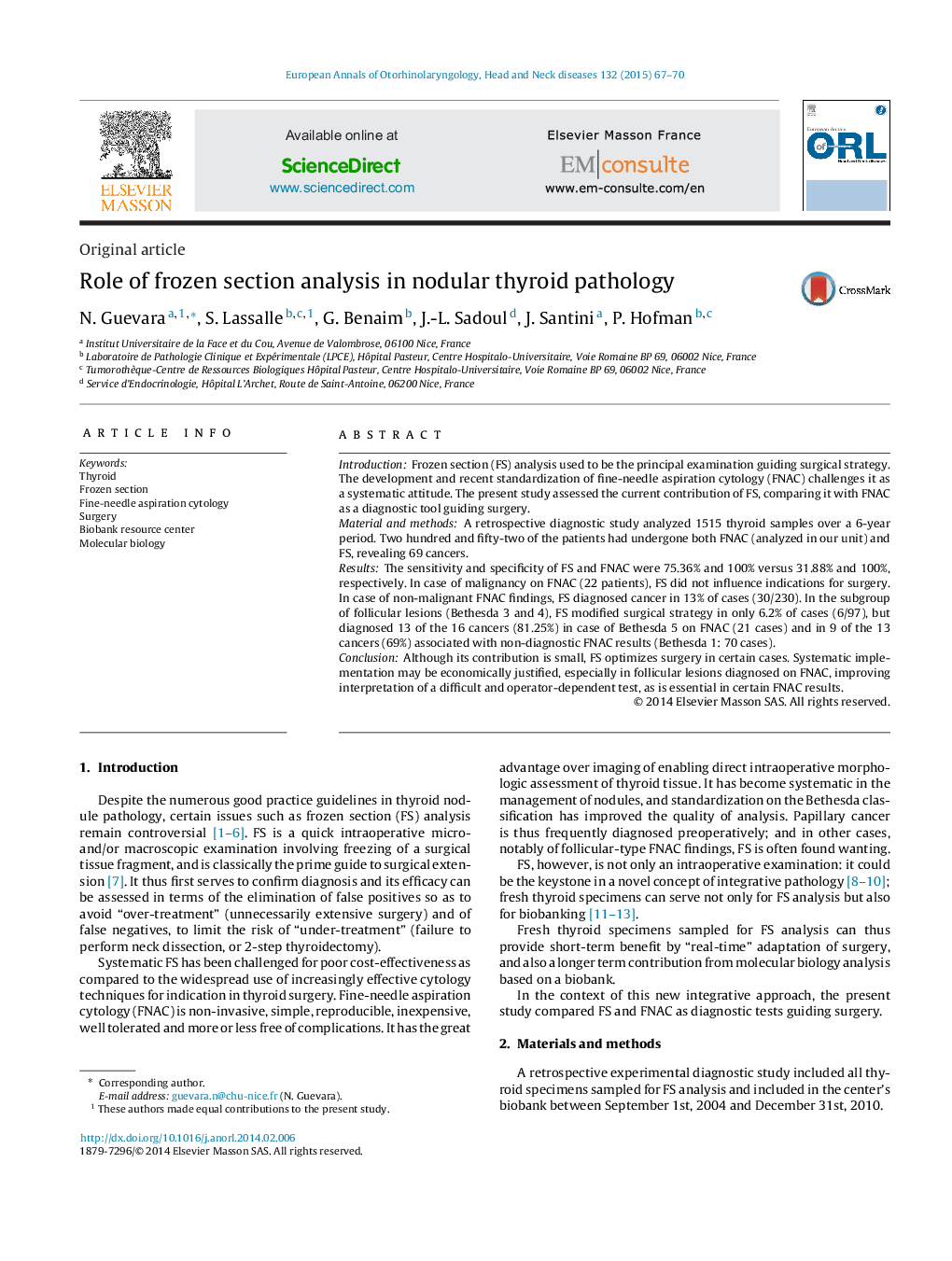| Article ID | Journal | Published Year | Pages | File Type |
|---|---|---|---|---|
| 4109927 | European Annals of Otorhinolaryngology, Head and Neck Diseases | 2015 | 4 Pages |
IntroductionFrozen section (FS) analysis used to be the principal examination guiding surgical strategy. The development and recent standardization of fine-needle aspiration cytology (FNAC) challenges it as a systematic attitude. The present study assessed the current contribution of FS, comparing it with FNAC as a diagnostic tool guiding surgery.Material and methodsA retrospective diagnostic study analyzed 1515 thyroid samples over a 6-year period. Two hundred and fifty-two of the patients had undergone both FNAC (analyzed in our unit) and FS, revealing 69 cancers.ResultsThe sensitivity and specificity of FS and FNAC were 75.36% and 100% versus 31.88% and 100%, respectively. In case of malignancy on FNAC (22 patients), FS did not influence indications for surgery. In case of non-malignant FNAC findings, FS diagnosed cancer in 13% of cases (30/230). In the subgroup of follicular lesions (Bethesda 3 and 4), FS modified surgical strategy in only 6.2% of cases (6/97), but diagnosed 13 of the 16 cancers (81.25%) in case of Bethesda 5 on FNAC (21 cases) and in 9 of the 13 cancers (69%) associated with non-diagnostic FNAC results (Bethesda 1: 70 cases).ConclusionAlthough its contribution is small, FS optimizes surgery in certain cases. Systematic implementation may be economically justified, especially in follicular lesions diagnosed on FNAC, improving interpretation of a difficult and operator-dependent test, as is essential in certain FNAC results.
